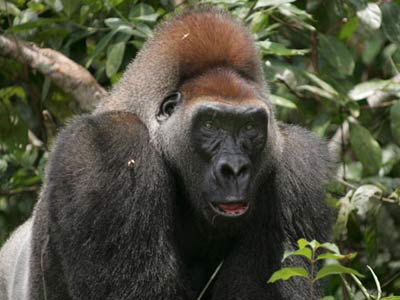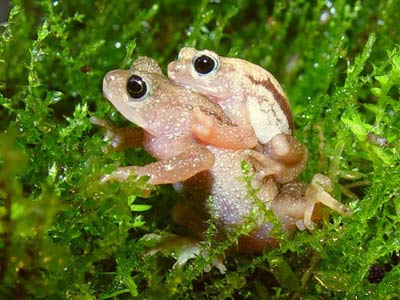The rarest animals in the 2009 Red Book
According to the latest report of the World Conservation Organization's Red List, more and more animals face extinction. Below is a picture of the species in the most dangerous situation.
The purpose of the IUCN Red List of Threatened Species is to list and emphasize globally endangered plants and animals. This list was compiled by the World Nature Conservation Organization in Gland, Switzerland.

Western primate.
According to the list, 17,291 species are going to share the fate of a lazy cuckoo that disappeared at the end of the 17th century. This list includes:
21% of mammals
30% of amphibians
12% of birds
28% of reptiles
37% of freshwater fish
35% of invertebrates
70% of plants

Kihansi flower toad.
Amphibians are the most threatened species with 1895 endangered species among 6285 species.
This Kihansi toad was once classified as seriously threatened last year and is now extinct in the wild.
The reason is that the construction of the dam at the Kihansi Falls (Tanzania) affects the long-lived habitat of a population of at least 17,000 toads. The dam diverted 90% of the water flowing into the areas where the toads live.
Moreover, this toad can be completely extinct by a fungal disease called chytridiomycosis. The disease is threatening hundreds of amphibian species.

Sharp clones with limb limbs.
Chytridiomycosis also pushes limb clones (Rabb's fringe-limbed), living in central Panama on the list of endangered species.
Since 2006, when fungal disease has spread into the region, scientists have been feeding and breeding but failed.

Great momentum Panay.
This is a difficult time for the survival of the species with 293 new species added to the Red Book.
Panay species (Varanus mabitang) resurrects Panay island in the Philippines threatened when the residence is encroached and transformed by farmers and forest felling.

Sail-tailed water lizard.
The sail-tailed lizard (Hydrosaurus pustulatus) is listed in the Red Book this year. This species also lives in the Philippines and is threatened by agricultural expansion; In addition, newly hatched animals are often caught for sale as pets.

Great treasure.
Of the 7515 invertebrate species in the Red Book, 2639 species are threatened with extinction.
This species of dragonfly is called a large treasure (Chlorocypha centripunctata) that lives in Southeastern Nigeria and Southwestern Cameroon. The main threat to this species is deforestation.

Queen of the Andes.
Up to 70% of plants are threatened, not less than 12,151 species of trees in the Red Book and 8,500 species are about to be extinct.
The Queen of the Andes (Puya raimondii) is found in Peru and Bolivia, which only produces seeds once in 80 years before dying.
The survival conditions of this species are further limited by climate change and the expansion of grazing into growing areas.
- The world's rarest cheetah is officially removed from the Red Book
- Discover the world's rarest rabbits in Vietnam
- Books nearly 400 years old cost more than 14 million
- Revealing the hidden secret in the 1,400-year-old book when taking X-rays
- The book is as small as a needle hole
- The least known close-up picture of the whale in the world
- Seagull is the rarest in the world
- Announcing the world's rarest animal
- Discovered a book by animal skin that shook the Christian believers
- Find the 'real life' version of the animals in 'The Jungle Boy' The Jungle Book
- History of book publishing industry development
- Discover one of the oldest Maya writings
 Animal 'suffering' after hibernation
Animal 'suffering' after hibernation Why do goats climb well?
Why do goats climb well? Scientists were surprised to see chimpanzees eating turtles
Scientists were surprised to see chimpanzees eating turtles Giant catfish died deadly due to drought in Thailand
Giant catfish died deadly due to drought in Thailand